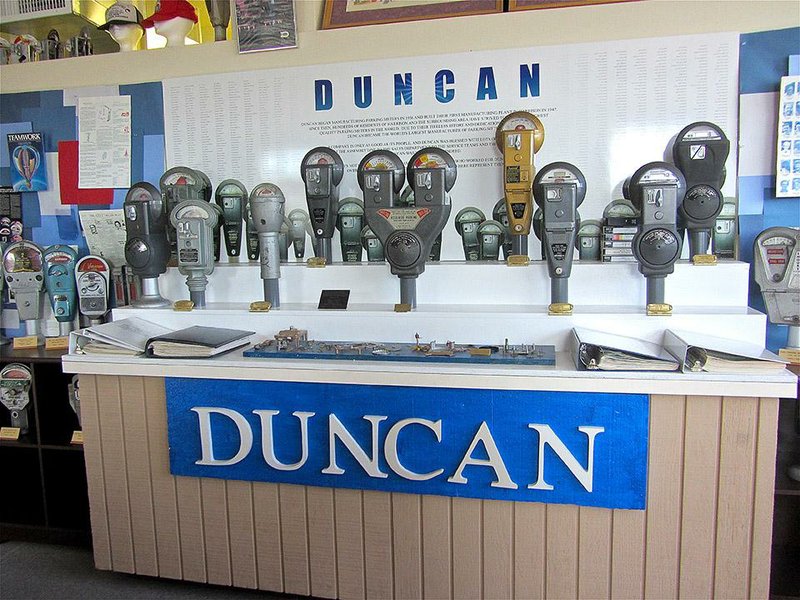HARRISON -- State-of-the-art parking meters, like the ones that lurk along Little Rock's River Market strip, no longer require a stash of nickels, dimes and quarters. They're happy to take your credit card as well.
So meters that swallow only cash could qualify as museum pieces. That's literally the case in Harrison, where a collection of the coins-only curbside devices is displayed on the second floor of Boone County Heritage Museum.
A bunch of vintage parking meters is unlikely to set a visitor's heart beating as swiftly as, say, the Mona Lisa. But the machines turn out to be an intriguing offbeat attraction at one of Arkansas' largest and most eclectic local museums.
Located in the original Harrison High School, built in 1912, the three-floor Boone County facility houses a trove of oddities. They're as diverse as a gasoline-powered railroad car, a suitcase without handles, two portable embalming tables, a varnished butter churn and the 1929 telephone switchboard from Harrison's landmark Hotel Seville.
The museum's array of meters reflects the fact that Duncan Industries began making the devices in Harrison in 1936. The collection was assembled by Clark Selby, a former Duncan executive.
Visitors learn that Duncan's original product was yo-yos, one of which is exhibited. The company's first parking meter was designed to give a receipt. But with mostly pennies being fed into meters during the Great Depression, receipts turned out to be too much trouble.
A displayed meter built for Kuwait takes coins with Arabic inscriptions from that Middle East nation. One from Hong Kong is labeled in Chinese and English, while another from Ireland is posted in Gaelic as well as English. A chuckle-worthy photo shows a horse hitched to a meter.
Featured in a ground-floor display case is a desperado who met his end in Harrison on Feb. 18, 1921. It happened when convicted murderer Henry Starr and three accomplices tried to rob People's State Bank of $6,000.
Starr, a distant relative of the notorious Belle Starr, was shot by former bank president William J. Myers. The badman died four days later in the city jail. His last whispered words to his grieving mother were supposedly, "I am satisfied to die. I have made my peace with God."
The museum is among 21 sites mapped out on the Historic Self-Guided Walking Tour brochure available from the Harrison Convention and Visitors Bureau.
Now a city of 13,000 on Crooked Creek, 140 miles northwest of Little Rock, Harrison received its municipal charter in 1878. The West Rush Historic Mural, a block from the courthouse square, depicts events and people of yesteryear.
Hotel Seville, in a striking Spanish design with Saracenic arches marking the front entries, has been restored and reopened to guests. Its Cafe 1929 is a good bet for lunch.
There's nothing in the museum or the walking-tour pamphlet directly addressing past racial attitudes and tensions that have been a tarnish on Harrison's reputation.
That's not a surprise, given that local museums around Arkansas and elsewhere tend to highlight the positive aspects of their communities' history. There's no obvious reason Harrison should be different in that regard.
Boone County Heritage Museum, 124 S. Cherry St., Harrison, is open 10 a.m.-4 p.m. Monday, Tuesday, Friday and Saturday; 10 a.m.-7 p.m. Thursday. Admission is $5; children under 12 enter free with an adult. Call (870) 741-3312 or visit bchrs.org.
Weekend on 01/08/2015
